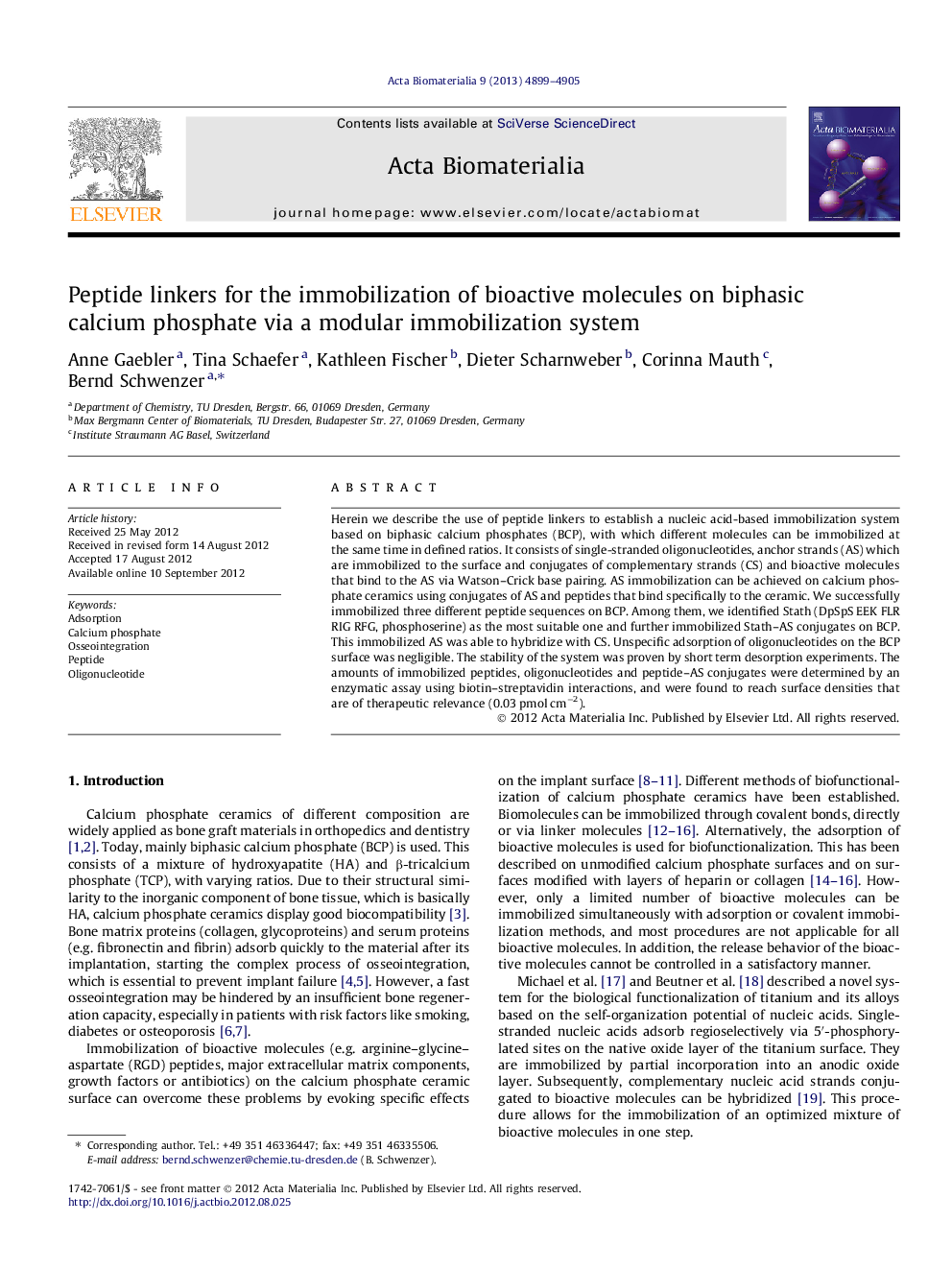| Article ID | Journal | Published Year | Pages | File Type |
|---|---|---|---|---|
| 945 | Acta Biomaterialia | 2013 | 7 Pages |
Herein we describe the use of peptide linkers to establish a nucleic acid-based immobilization system based on biphasic calcium phosphates (BCP), with which different molecules can be immobilized at the same time in defined ratios. It consists of single-stranded oligonucleotides, anchor strands (AS) which are immobilized to the surface and conjugates of complementary strands (CS) and bioactive molecules that bind to the AS via Watson–Crick base pairing. AS immobilization can be achieved on calcium phosphate ceramics using conjugates of AS and peptides that bind specifically to the ceramic. We successfully immobilized three different peptide sequences on BCP. Among them, we identified Stath (DpSpS EEK FLR RIG RFG, phosphoserine) as the most suitable one and further immobilized Stath–AS conjugates on BCP. This immobilized AS was able to hybridize with CS. Unspecific adsorption of oligonucleotides on the BCP surface was negligible. The stability of the system was proven by short term desorption experiments. The amounts of immobilized peptides, oligonucleotides and peptide–AS conjugates were determined by an enzymatic assay using biotin–streptavidin interactions, and were found to reach surface densities that are of therapeutic relevance (0.03 pmol cm−2).
